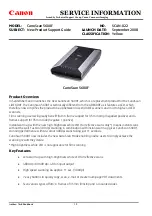
Rebar Scanner A60+
29
5. The probe is placed on the surface of detected body and moved
at uniform speed in parallel with rebar and along the direction that is
vertical to rebar direction.
The speed should be less than
20mm/s.
When the probe reaches the top of detected rebar, the instrument
gives the humming to prompt that rebar is under this position. The
probe is moved to and fro at nearby position in reverse direction. At
the same time, Signalon the screen can be observed. The position
that Signalis the maximum is accurate position of rebar. Probe
position is kept unchangeable. Press the RANDE key. After a while,
detect the diameter and covering layer thickness of detected rebar,
which are showed correspondingly on the positions on the right side
of Rebar Diameter and Covering Layer Thickness in large print. At
this time, press the SAVE key to save detection results into current
set project No.
4.3 Location of multiple rebar and detection of covering layer
thickness
Multiple rebar uses layout of multiple parallel rebar (main rebar)
plus stirrups generally (e.g. beam and column etc.) or grid pattern
layout (e.g. plate and wall etc.).
4.3.1 Detection of grid pattern rebar
1.Take out of the instrument and connect the trolley to the probe.
2. Turn on the instrument power and select the function of Rebar Scan.
Enter into the function of Grid Scan and select corresponding function
according to required dimension. According to design data, rebar
diameter is set as known diameter. If rebar diameter is not known,









































